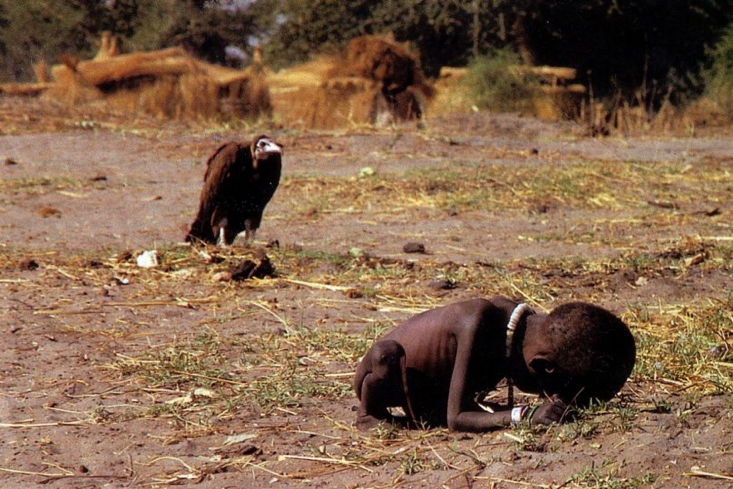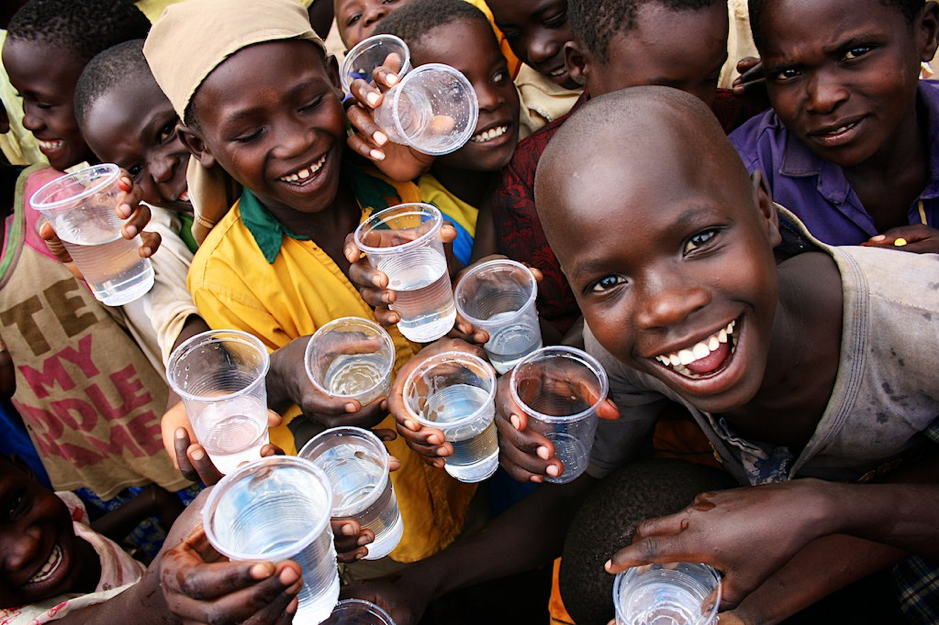Humanitarian appeals rely on the use of the technique; ‘Poverty Pornography’. This is where appeals work to expose the reality of extreme poverty and human suffering in order to evoke emotion from the audience and attempt to appeal to their ‘humanity’. With this appeal, feelings of guilt and helplessness effectively intensify, subsequently enticing the audience to donate. Kate Manzo writes in ‘Imaging Humanitarianism: NGO Identity and the Iconography of Childhood’ that images of ‘Poverty Pornography’ used in humanitarian appeals “help to legitimise the foundational idea of all western-based development – that the global south is inevitably better off with ongoing interventions (in the name of development) than it would be without them” (Manzo, 2008), exacerbating and sustaining the common misconception that it is the developed West who will continue to provide aid to the Global South.
In using Poverty Pornography, humanitarian appeals can feed off of individuals’ emotional responses in an effort to gain attention and dramatize suffering. This technique has been widely criticised as it works to exploit suffering in the name of donations. Stanley Cohen contends that images of ‘poverty pornography’ wrongfully allows for the presentation of development as ‘a spectacle of tragedy, disaster, disease and cruelty’. (Cohen, 2013). This suggests that ‘poverty pornography’ has a greater detriment to development appeals due to its inaccurate and dramatized portrayal of human suffering.
https://iconicphotos.wordpress.com/2009/08/12/vulture-stalking-a-child/

The above image is an example of ‘Poverty Pornography’. Taken in the early 1990s, South African photojournalist Kevin Carter, captured the scene of a vulture stalking a malnourished and vulnerable child who had collapsed on their way to a feeding centre in a small village in South Sudan. In the New York Times, an article announcing the suicide of Kevin Carter, the image is said to be “a metaphor for Africa’s despair” (The New York Times, 1994). This highlights how appeals depend on images such as these to accentuate the hardship of individuals by the dramatization of their own suffering. It presents them not as victims but as objects of suffering which has dehumanising effects on the individuals. This is a major limitation of using ‘poverty pornography’ in humanitarian appeals.
In response to the criticisms against humanitarian appeals use of ‘poverty pornography’, appeals have since introduced the technique known as ‘Deliberate Positivism’. This is where appeals emphasise the positive effects that uses a more personal basis and evidence of this is reflected in what appears to be ‘success stories’ e.g. photos of children smiling and laughing. ‘Deliberate positivism’ presents us with a seemingly more optimistic view on development by demonstrating the positive impact that donors can make to beneficiaries, thus enticing them to donate to the cause as the impact their donations have made is clearly shown. It also works to encourage others to donate as there is concrete evidence of the positive effects that donations have on humanitarian appeals. This is a supposedly more ethical and practical technique used in humanitarian appeals because it does not dramatize suffering to aid donations.
With the optimistic approach in mind, audiences can correspond with the positive energy associated with the images and so themselves feel somewhat hopeful. This encourages donors to continue to support such campaigns as they believe that they are largely benefiting such campaigns.

http://www.faceafrica.org/whywater
This next image has important implications for humanitarian appeals as it shows children who are fully clothed, are happy and smiling and children who have with clean water. It implies that in having clean water the livelihoods of the children depicted in the images has been positively changed for the better in more ways than one. Not only does this reflect the ‘success stories’ that are associated with the use of ‘Deliberate Positivism’ in humanitarian appeals, but it challenges the negative stereotypes about the Third World, and so subsequently avoids dehumanising those seen as the ‘Other’. However, the approach still comes under scrutiny. Dogra claims that ‘deliberate positivism’ is “a lazy way out and lets NGOs ignore messy questions of power and ideology” (Dogra, 2007).
In some ways, deliberate positivism may be seen as method that appeases the audience, in the sense that it works to show donors only the positive effects to the beneficiaries. This means that there are still many varying aspects closely tied to these appeals that are ignored or minimised due to the emphasis that is placed on the positive effects. Therefore, although beneficial to appeals in the short-term, there are matters that make the technique inadequate in the long-term, suggesting that its long-term implications are not effective in aiding humanitarian appeals.
Bibliography
Cohen, S. (2013). States of Denial: Knowing about Atrocities and Suffering. John Wiley & Sons.
Dogra, N. (2007). ‘Reading NGOs Visually’- implications of visual images for NGO management. Implications of visual images for NGO management. Journal of Interantional Development, 161-171.
Manzo, K. (2008). Imaging Humanitarianism: NGO Identity and the Iconography of Childhood. Retrieved from Research Gate: https://www.researchgate.net/publication/228647523_Imaging_Humanitarianism_NGO_Identity_and_the_Iconography_of_Childhood
The New York Times. (1994, July 29). The New York Times: Kevin Carter, a Pulitzer Winner for Sudan Photo, is Dead at 33. Retrieved from The New York Times: https://www.nytimes.com/1994/07/29/world/kevin-carter-a-pulitzer-winner-for-sudan-photo-is-dead-at-33.html